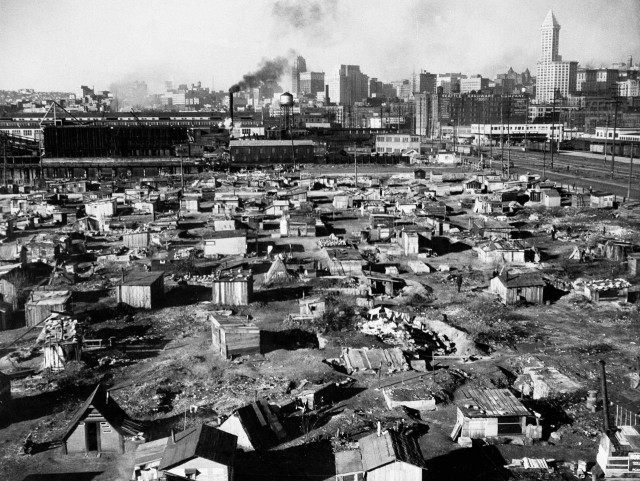California’s record drought and the state’s inability to manage it has created shantytowns reminiscent of Great Depression-era “Hoovervilles” in once-vibrant agricultural communities across the Golden State.
With more than a million acres of farmland laying fallow across the state, many of California’s agricultural workers have lost jobs, homes and livelihoods as a result of the drought.
The situation in Mendota, California can almost be likened to something out of John Steinbeck’s landmark novel The Grapes of Wrath. A feature article in the San Francisco Chronicle this week documents the lives of several of these shantytown dwellers.
…
For nearly two years, [Martín Hernandez Mena] had lived across the road from the canal. Despite the drought, it still flowed, carrying what remained of an ever-dwindling, much-disputed water supply. Mena’s plywood shack, just yards away, sat on the bed of another irrigation ditch, this one long dry.
His was one of dozens of shanties that grew where little else does after four years of California’s crippling drought. It had no toilet, no shower, no sink. But it was all he had left after the fieldwork he’d done for decades disappeared.
Mena’s is a story about what water gives and takes away — how California’s farmworkers are an ecological crisis away from losing their jobs and their homes, with no safety net.
Read more at the San Francisco Chronicle here.

COMMENTS
Please let us know if you're having issues with commenting.